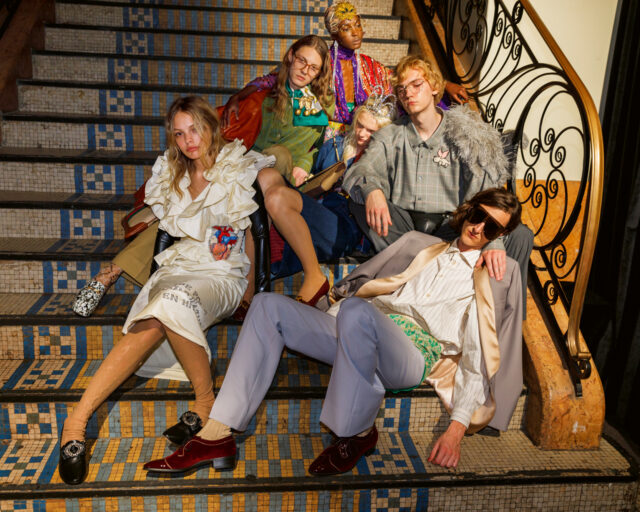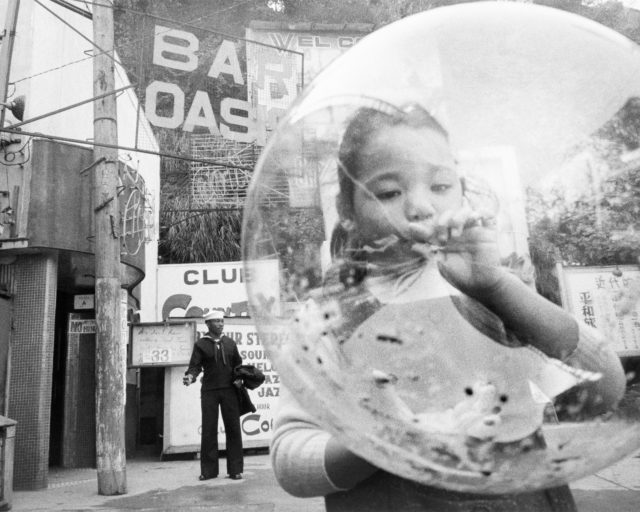London Exhibitions of Photographers' Collections

Installation view of Simon Fujiwara’s curated section at Hayward Gallery, History Is Now: 7 Artists Take On Britain. Photograph: Linda Nylind
Two exhibitions in London currently highlight collections of art and oddities that belong to some of the most prominent photographers today. Magnificent Obsessions at the Barbican presents the objects belonging to photographers such as Martin Parr and Hiroshi Sugimoto while the Hayward Gallery’s History is Now: 7 Artists Take on Britain has four photographers—Hannah Starkey, Jane and Louise Wilson, and Richard Wentworth—acting as curators of various section. Writer Isabel Stevens examines the theme. This review first appeared in Issue 6 of the Aperture Photography App: click here to read more and download the app.
“You know how a collector is. He gets excessively conscious of a certain object and falls in love with it and then pursues it…And it’s compulsive and you can hardly stop.” –Walker Evans
The obsessive hunt of the collector is an activity and state of mind the photographer knows all too well. Walker Evans, who walked away with many of the flotsam, signs, and tools he gathered with his lens, and who was a life-long collector of picture postcards, regarded the two pursuits as “almost the same thing.” For isn’t the tendency to collect deepest ingrained in photographers and the nature of their medium? Consider conceptually-inclined artists with one-track minds fixed on subjects such as water towers (Bernd and Hilla Becher); photo-collagists from Hannah Höch to John Stezaker; archive rummagers such as Larry Sultan and Mike Mandel; Alec Soth and his shot lists of subjects to scavenge (suitcases, snow, unusually tall people); and, of course, Susan Sontag’s famous statements “To photograph is to appropriate the thing being photographed” and “to collect photographs is to collect the world.” When, in 1920, Eugène Atget remarked that “the collection has today almost completely disappeared,” he wasn’t just referring to his negatives, but the content of them—the curious façades, statues, fountains, and street vendors of old Paris.

Martin Parr, Venice, Italy, 2005 © Martin Parr/ Magnum Photos/ Rocket Gallery. From Magnificent Obsessions: The Artist as Collector
Two exhibitions in London currently highlight photographers’ foraging acuities and their collecting habits. At the Barbican, Magnificent Obsessions presents artists’ personal collections, including Martin Parr and Hiroshi Sugimoto. Meanwhile the Hayward Gallery’s History is Now: 7 Artists Take on Britain has four photographers— Hannah Starkey, Jane and Louise Wilson, and Richard Wentworth—acting as curators refracting moments and themes in Britain’s seventy-year postwar history through art works, artifacts, and archival documents.
These exhibition strategies are far from a new phenomenon. Sugimoto’s collection has been aired before (just not in the UK), and Parrworld, at the Jeu de Paume in 2009, showed off many of the photographer’s acquisitions, ranging from the bizarre (Saddam Hussein watches) to the banal (boring postcards). Similarly, both the Barbican and Hayward exhibitions have a Wunderkammer feel to them: vitrines and piles of unexpected, disparate objects and images.

50 Glass Eyes, 1811–88 Collection of Hiroshi Sugimoto, from Magnificent Obsessions: The Artist as Collector
While exhibitions generally present finished artworks and reference influences, an artist’s selection opens up the creative process and offers a view of sources of inspiration. In this case, showing a collection or curating a show becomes an act of self-portraiture, or even advocacy. Where an artist takes the role of a celebrity curator, he or she can introduce unknown artists to wider audiences in the ways that regular curators often can’t. In the case of photography, the opportunity it provides for rediscovery is particularly pertinent as the medium was looked down upon for so much of the twentieth century, and, as a result, offers historical gaps to fill. Martin Parr’s championing of photographers such as Tony Ray-Jones stands in a long tradition, reaching back to Berenice Abbott’s salvaging of Eugène Atget’s work.

Flying postcard, 1960–90. Collection of Martin Parr © Martin Parr Collection/ Magnum Photos/ Rocket Gallery. From Magnificent Obsessions: The Artist as Collector
At the Barbican, Parr’s Soviet space-dog memorabilia isn’t nearly as fascinating as the early, pre–World War II postcards on show, which commemorate idiosyncratic sights and occasions such as giant bonfires and hailstones, car crashes and factory-smoke-filled landscapes that resemble miniature, monochrome Turner paintings. Beyond their salacious and strange everyday obsessions, which chime with Parr’s own, Parr also uncovers their artistry, particularly the elaborate, morbid collages of W. Gothard, which record and pay tribute to disasters.
While Parr’s collection offers the thrill of discovery, Sugimoto’s hardly raises an eyebrow. The aged optical curios in glass cabinets and ordered anatomical drawings lined on the wall, which at close quarters look almost abstract, are exactly what we might expect a photographer fascinated with perception, time, and surrealism to be attracted to. Ditto the most entrancing segment of this studied and austere presentation, Sugimoto’s fossils of sea creatures that call to mind the cyanotypes of Anna Atkins, who collected botanical specimens to preserve. Sadly, the William Henry Fox Talbot images from his collection aren’t on show. Those eager to know what other photographic treasures lie in his possession will have to wait for Sugimoto’s museum, the Odawara Art Foundation, scheduled to open in spring 2016. His sleek art complex is an enticing proposition, but you do hope that there’s also a future for dusty old museums.
Just as Sugimoto’s assemblage at the Barbican is too much of a scattershot self-portrait, so too is Jane and Louise Wilson’s display at the Hayward. It explores social unrest in British history, but too often through the prism of their own work. However, it does bring to light two female photographers who each explored the situation of women in the 1970s: Penelope Slinger, whose surreal collages blend her body with a deserted country mansion (the messy, eerie juxtapositions standing out over the neat, obvious ones); and Christine Voge, whose intimate documentation focuses on daily life in the first women’s refuge in the UK—including children, and registering both troubled, confrontational gazes and moments of carefree abandon.

Installation view of Hannah Starkey’s curated section at Hayward Gallery, History Is Now: 7 Artists Take On Britain. Photo Linda Nylind
Voge also figures in Hannah Starkey’s more daring arrangement investigating gender and visual culture, sifted from the Arts Council’s under-appreciated photography collection. Voge’s image of a child crying, contorting her body away from the prying lens, is matched with images by other photographers of children’s bodies arrested in strange positions. Starkey’s battle cry for intelligent images, and tender, inquisitive representations of people and their situations, is a familiar one, but feels fresh, as social reportage and fine art are all mixed up in a display ordered by motif as much as intellectual inquiry.

Installation view of Jane and Louise Wilson’s curated section at Hayward Gallery, History Is Now: 7 Artists Take On Britain. Photograph: Linda Nylind
At the Hayward, Richard Wentworth’s messy scrapbook approach to curating and collecting offers the clearest challenge to the white-walled status quo—and is furthest removed from Sugimoto’s Barbican stockpile. “True to the experience of being alive,” he calls it. Just as the makeshift urban assemblages he chances upon in his ongoing photographic series Making Do and Getting By make you look at street scenes twice, here his arrangements alter the way you look at and behave in a gallery: peer up at book covers, facedown on a glass shelf above; bend down and assume almost the same pose as the female cleaners at the feet of officers in photojournalist Bert Hardy’s record of Downing Street in the grip of WWII—and later, as the soldiers kneeling in the sand in Robert Capa’s blurred documents of the D-day landings.
Looking at Capa’s grainy records, which very nearly didn’t survive, you realize one more reason why “the collecting gene,” as Parr terms it, is so engrained in photographers: to collect is to keep things safe, and photography is so very fragile.
Magnificent Obsessions at the Barbican runs through May 24.
History is Now at the Hayward Gallery runs through April 26.

























